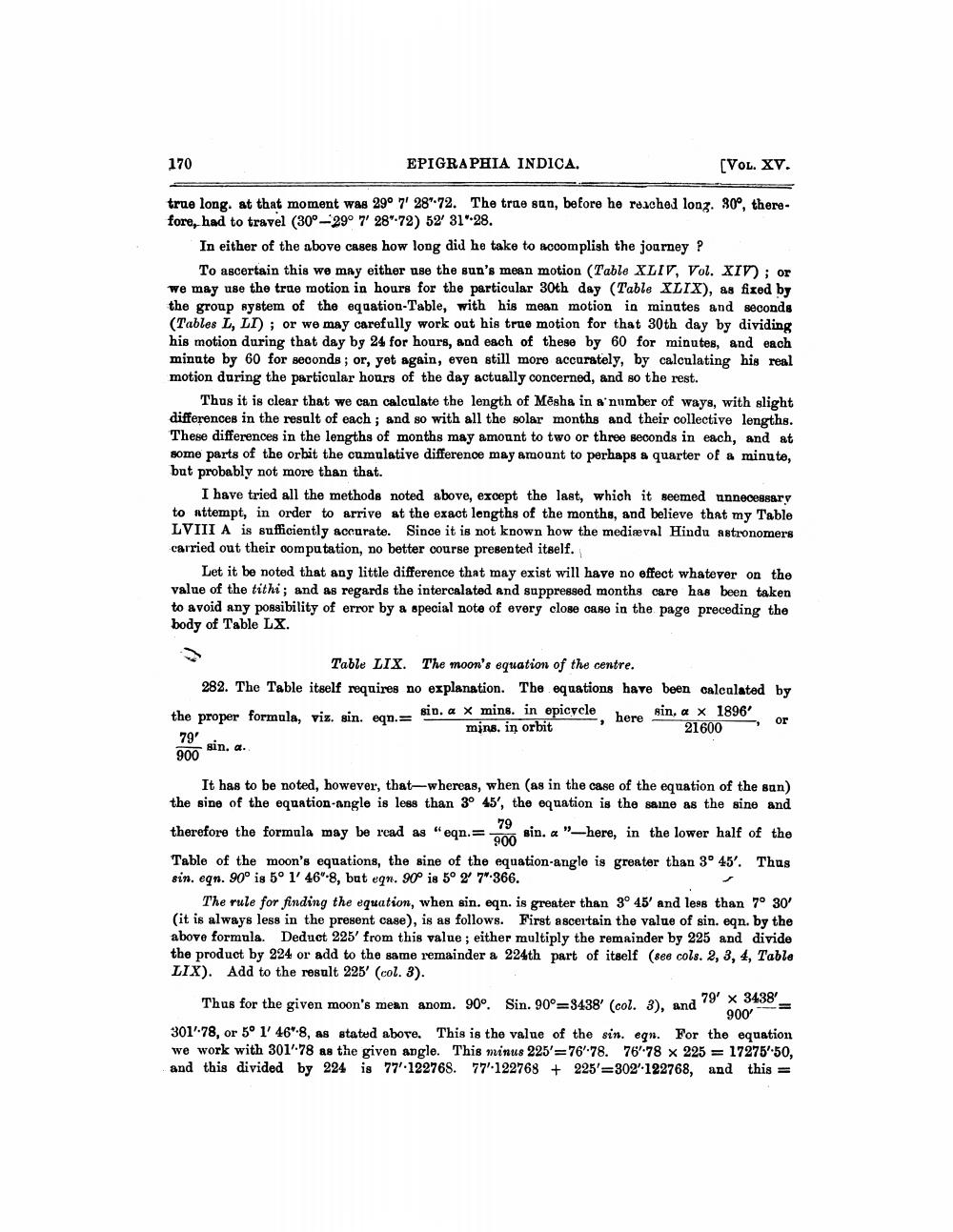________________
170
EPIGRAPHIA INDICA.
[Vol. XV.
true long. at that moment was 29° 7' 28-72. The true san, before he ruched long. 80°, there. fore, had to travel (30°-29° 7' 28*72) 52' 31.28.
In either of the above cases how long did he take to accomplish the journey ?
To ascertain this we may either use the sun's mean motion (Table XLIV, Vol. XIV); or we may use the true motion in hours for the particular 30th day (Table XLIX), as fixed by the group system of the equation-Table, with his mean motion in minutes and seconds (Tables L, LI) ; or we may carefully work out his true motion for that 30th day by dividing his motion during that day by 24 for hours, and each of these by 60 for minutes, and each minute by 60 for seconds; or, yet again, even still more accurately, by calculating his real motion during the particular hours of the day actually concerned, and so the rest.
Thus it is clear that we can calculate the length of Mēsha in a number of ways, with slight differences in the result of each ; and so with all the solar months and their collective lengths. These differences in the lengths of months may amount to two or three seconds in each, and at some parts of the orbit the cumulative difference may amount to perhaps a quarter of a minute, but probably not more than that.
I have tried all the methods noted above, except the last, which it seemed unnecessary to attempt, in order to arrive at the exact lengths of the months, and believe that my Table LVIII A is sufficiently accurate. Since it is not known how the medieval Hindu astronomers carried out their computation, no better course presented itself.
Let it be noted that any little difference that may exist will have no effect whatever on the value of the tithi ; and as regards the intercalated and suppressed months care has been taken to avoid any possibility of error by a special note of every close case in the page preceding the body of Table LX.
Table LIX. The moon's equation of the centre. 282. The Table itself requires no explanation. The equations have been calculated by the proper formula, viz. sin. egn. sid. a * mins. in epicycle here sin, a ~ 1896
mins. in orbit
21600
or
79 sin. a.
It has to be noted, however, that-whereas, when (as in the case of the equation of the san) the sine of the equation-angle is less than 3° 45', the equation is the saine as the sine and
79 y be icad as "eqn.= 900
sin. a"-here, in the lower half of the
. Table of the moon's equations, the sine of the equation-angle is greater than 3° 45'. Thus sin, eqn. 90° is 5° 1' 46"-8, but eqn. 90° is 5° 2' 7*.366.
The rule for finding the equation, when sin. eqn. is greater than 3° 45' and less than 7° 30' (it is always less in the present case), is as follows. First ascertain the value of sin. egn. by the above formula. Deduct 225' from this value; either multiply the remainder by 225 and divide the product by 224 or add to the same remainder a 224th part of itself (see cols. 2, 3, 4, Table LIX). Add to the result 225' (col. 3).
Thus for the given moon's mean anom. 90°. Sin. 90°=3438' (col. 3), and "9
900301'78, or 5° 1' 46":8, as stated above. This is the value of the sin. egn. For the equation we work with 301.78 as the given angle. This minus 225'=76-78. 76.78 x 225 = 17275-50, and this divided by 224 is 77.122768. 77-122768 + 225'=802122768, and this =




